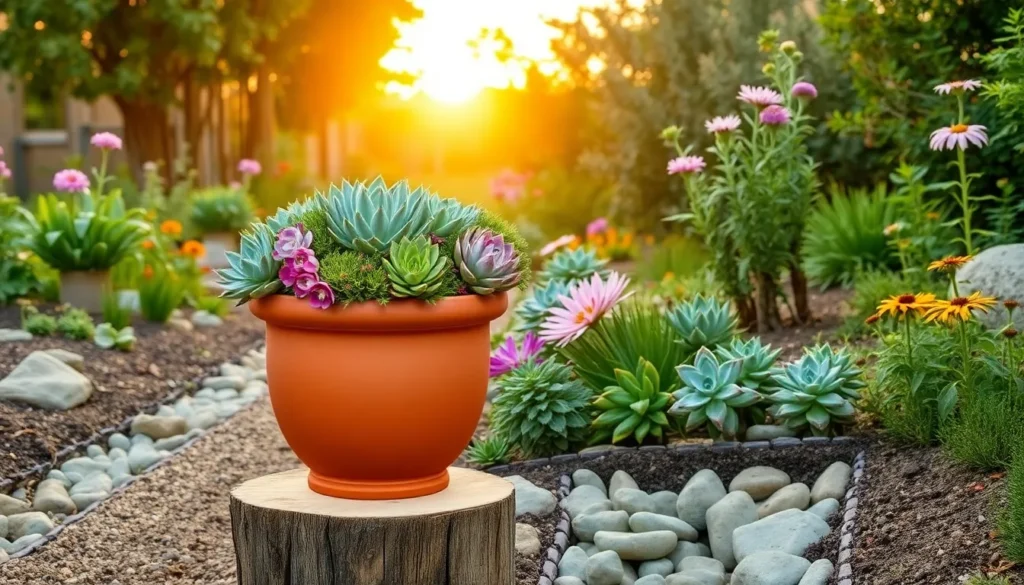Gardening is a joyful dance with nature, where every drop of water counts, especially in our ever-changing climate. Whether you’re a green-thumbed guru or planting your first seed, our guide to “6 Common Water-Saving Garden Ideas” is your ticket to creating a lush, thriving oasis without breaking the water bank. With these innovative and practical techniques, you’ll not only conserve water but also enhance the health and beauty of your garden, making every bloom a testament to your success.
Imagine the satisfaction of nurturing a flourishing garden that thrives even during dry spells. This collection of tried-and-tested methods promises to equip you with the confidence and tools you need to transform your gardening practices. Dive in with enthusiasm and watch as your garden becomes not just a source of pride, but a model of sustainability and efficiency.
Implement Drip Irrigation Systems
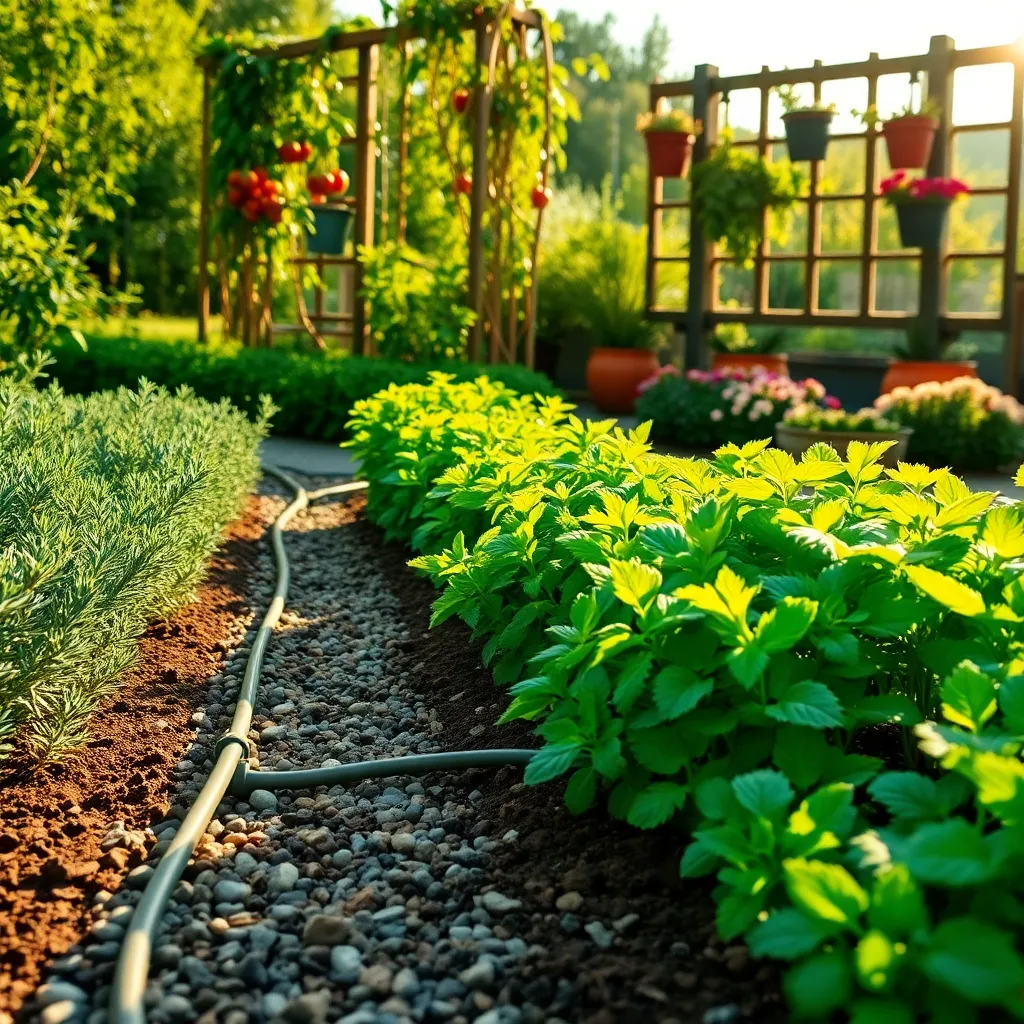
Drip irrigation systems are an effective way to conserve water while ensuring your plants receive the hydration they need. By delivering water directly to the plant roots, these systems minimize evaporation and reduce water wastage.
To start, you’ll need to select the right components, such as tubing and emitters, tailored to your garden’s layout. It’s crucial to plan the system so that water is evenly distributed to all plants, ensuring each one receives adequate moisture.
Installation can be simple or complex, depending on your garden’s size and your experience level. For beginners, a basic kit that includes all necessary components can be a good starting point, while more experienced gardeners might prefer to customize their systems for efficiency.
Once installed, you’ll need to monitor and adjust the system to match seasonal changes and plant growth. Check regularly for clogs or leaks in the tubing to maintain optimal water delivery and prevent system failure.
- Ensure emitters are spaced appropriately for each plant’s watering needs.
- Adjust watering schedules according to your climate and soil type—sandy soils may require more frequent watering than clay soils.
- Test soil moisture levels periodically to avoid overwatering, which can lead to root rot.
Mulch to Retain Soil Moisture
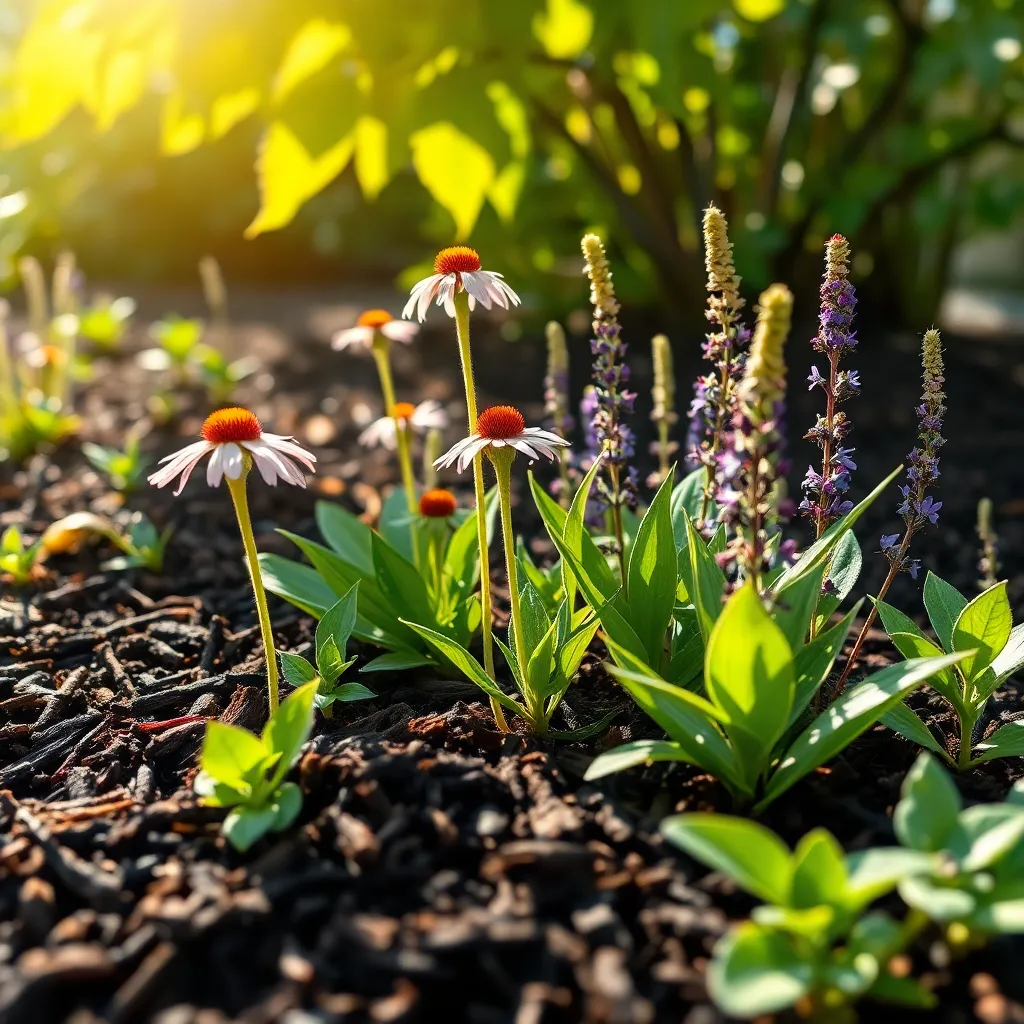
Mulching is a simple yet effective method to conserve soil moisture in your garden, providing both beginners and experienced gardeners with a practical water-saving solution. By applying a layer of mulch, such as shredded bark, straw, or compost, you can significantly reduce evaporation and keep your soil consistently moist.
Choosing the right type of mulch is essential for optimal results. Organic mulches, like wood chips or leaf mold, not only retain moisture but also enrich the soil as they decompose, offering additional nutrients to your plants.
For a straightforward application, spread mulch evenly across your garden beds, ensuring a depth of about 2 to 4 inches. This depth is crucial as it helps regulate soil temperature and suppresses weed growth, which competes with your plants for water.
If you’re dealing with particularly dry climates or sandy soil, consider using a heavier mulch such as straw or bark chips, which can provide added insulation. Advanced gardeners might experiment with layering different types of mulch, combining textures to maximize moisture retention and soil health.
Regularly check your mulch layer to ensure it hasn’t compacted, which can impede water penetration. Fluffing the mulch every few months can help maintain its effectiveness, allowing water to seep through to the roots more efficiently.
Choose Drought-Resistant Plants

After applying mulch to retain soil moisture, selecting drought-resistant plants is a smart strategy to conserve water. These plants are adapted to thrive in low-water conditions, making them ideal for water-conscious gardeners.
Consider choosing native plants that are naturally equipped to handle dry spells. Native species often require less water and maintenance because they are well-suited to the local climate and soil conditions.
For a vibrant garden, incorporate a mix of drought-tolerant perennials such as lavender, yarrow, and sedum. These plants not only withstand dry conditions but also add color and texture to your landscape.
Advanced gardeners might explore xeriscaping, a landscaping technique that emphasizes water efficiency. This method involves grouping plants with similar water needs and using efficient irrigation systems, like drip irrigation, to target the roots directly.
To ensure success, plant your drought-resistant varieties in well-draining soil, such as sandy or loamy soil types. Water new plants deeply but infrequently, allowing the soil to dry out between waterings to encourage deep root growth.
Water Early to Reduce Evaporation
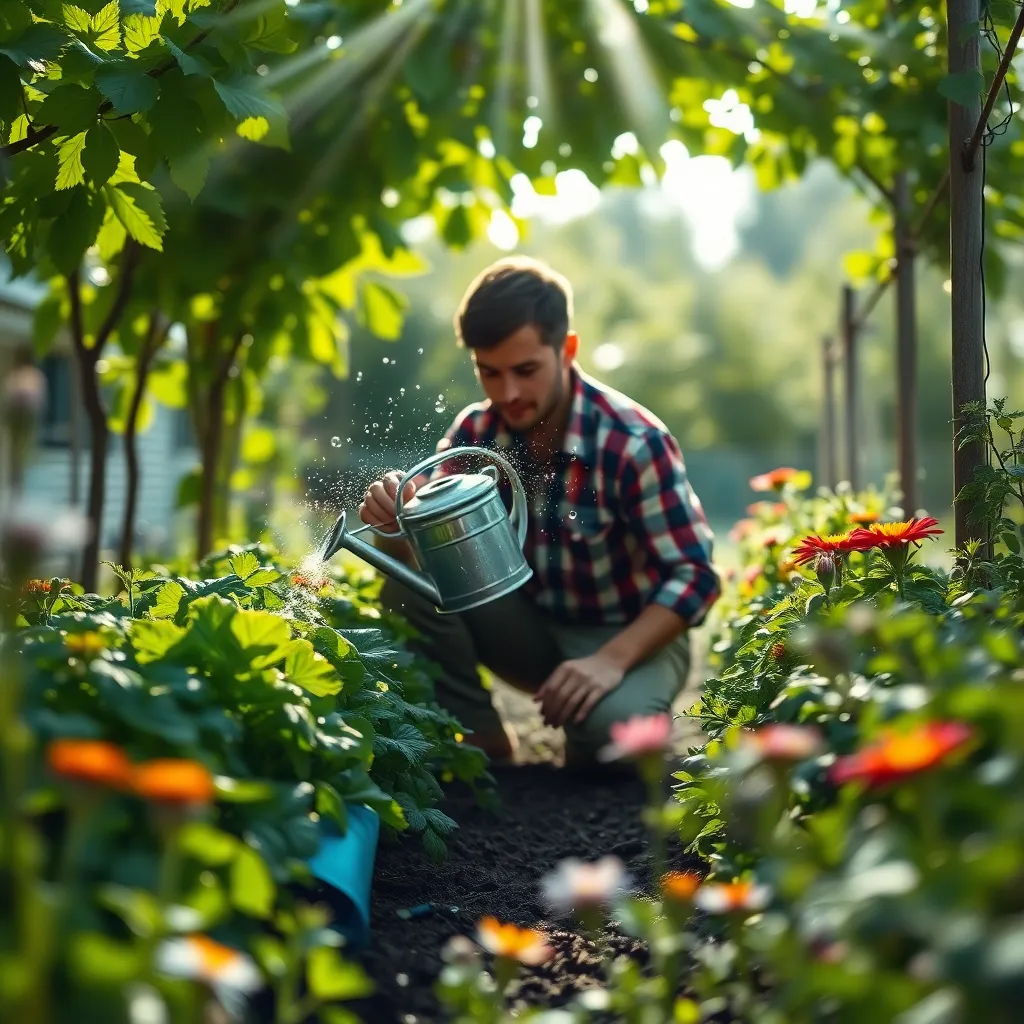
Watering your garden in the early morning can significantly reduce water loss due to evaporation. This practice not only conserves water but also ensures that your plants receive the moisture they need when the sun’s rays are less intense.
During the early hours, the cooler temperatures allow the soil to absorb water more effectively. This means that your plants will have access to the moisture throughout the day, promoting healthier growth and reducing stress on the plants.
For beginners, setting a routine to water between 5 a.m. and 9 a.m. can make a noticeable difference. Consider using a timer on your irrigation system to automate this process, ensuring consistency and saving you time.
Advanced gardeners might explore drip irrigation systems, which can be set to water at specific times to maximize efficiency. These systems deliver water directly to the roots, further minimizing evaporation and ensuring that every drop is used effectively.
Harvest Rainwater for Garden Use
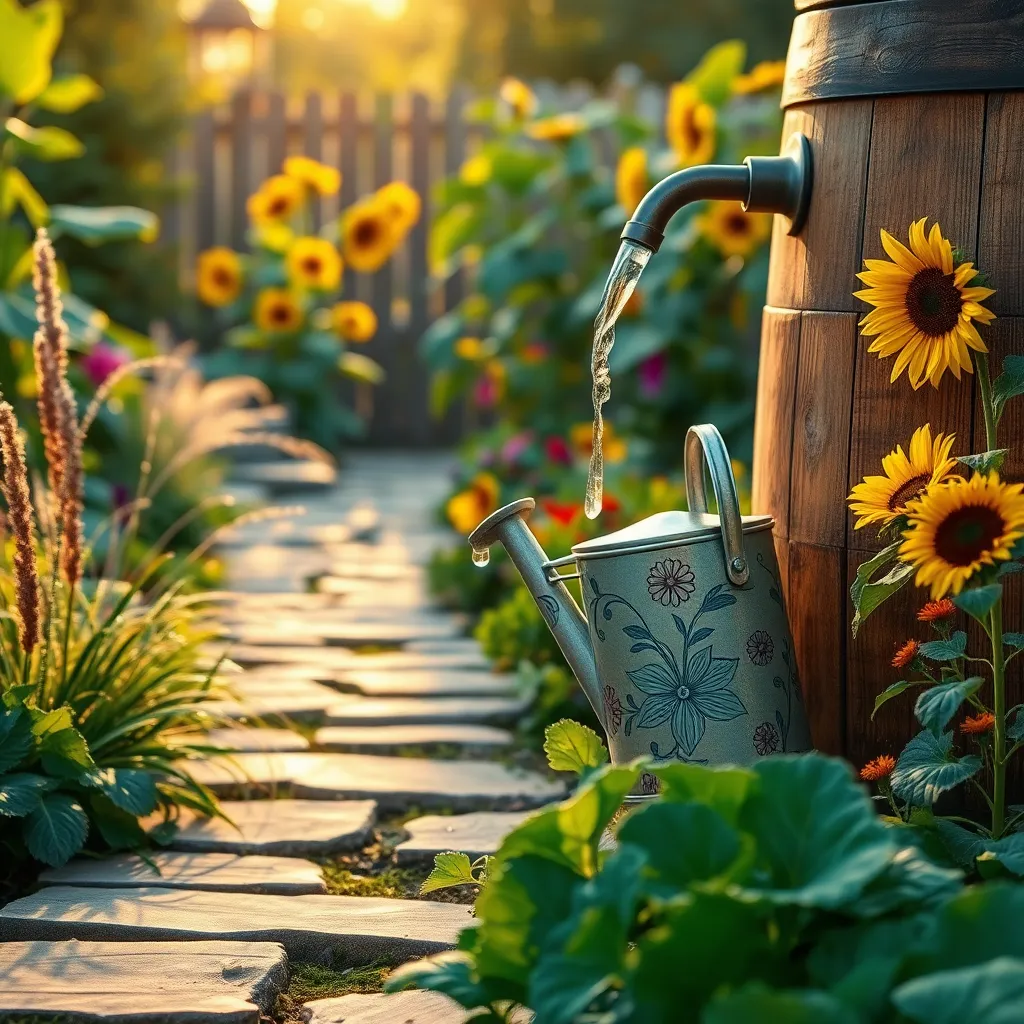
Harvesting rainwater is an excellent way to conserve water and ensure your garden thrives even during dry spells. Begin by setting up a simple rain barrel system to collect runoff from your roof, which can be used to water your garden during periods of low rainfall.
Position your rain barrel under a downspout to maximize water collection, ensuring it has a secure lid to prevent debris and mosquitoes from contaminating the water. Install a spigot near the bottom of the barrel for easy access to the water, allowing you to attach a hose or fill a watering can directly.
Regularly check your rain barrel for leaks and clean it out at least once a season to maintain water quality. In colder climates, consider disconnecting and storing the barrel during winter to prevent damage from freezing temperatures.
For more advanced gardeners, consider connecting multiple barrels using a linking kit to increase your water storage capacity. This setup can be particularly beneficial if you have a large garden or if your area experiences long periods without rain.
Group Plants with Similar Needs

Grouping plants with similar needs is an effective strategy to conserve water in your garden. By doing so, you ensure that each plant receives the optimal amount of water, reducing waste and promoting healthy growth.
Consider grouping plants based on their water requirements, such as drought-tolerant species together. This allows you to create distinct watering zones, making it easier to manage and maintain your garden efficiently.
For instance, succulents and Mediterranean herbs like rosemary and lavender thrive with minimal watering. Plant them in well-drained soil to prevent root rot and enhance their drought resistance.
To further optimize water use, ensure that sun-loving plants are grouped together and shaded plants are in another location. This ensures each group gets the right amount of sunlight and water, preventing overwatering in shaded areas.
Advanced gardeners can employ a technique called “hydrozoning,” where plants with similar moisture needs are placed on the same irrigation line. This can significantly reduce water usage and ensure that each plant receives the precise amount of water it needs.
Remember to regularly mulch around plant bases to retain soil moisture and suppress weeds. Organic mulches such as straw or wood chips can also improve soil conditions over time, benefiting your grouped plants.
Conclusion: Growing Success with These Plants
In nurturing a thriving relationship, just as in cultivating a water-saving garden, mindful strategies can yield abundant rewards. This article covered six essential concepts that parallel both endeavors: establishing open communication channels akin to drip irrigation, setting boundaries like strategic mulching, nurturing emotional intimacy as you would with companion planting, managing conflict akin to efficient watering, maintaining trust similar to soil conservation, and fostering shared goals like sustainable landscaping.
As an immediate next step, consider identifying one area in your relationship that could benefit from these principles. Perhaps initiate a heartfelt conversation or set a new, shared goal to strengthen your bond.
Remember, nurturing a relationship, like tending to a garden, requires consistent care and attention. Bookmark this article for future reference, ensuring you have these invaluable tips at your fingertips whenever you need them. By integrating these strategies, you pave the way for a flourishing relationship that stands the test of time.
Embrace this journey with optimism; your relationship’s success is an ever-growing garden, promising beauty and fulfillment in the days to come. Let this be the beginning of a deeper, more connected partnership.

